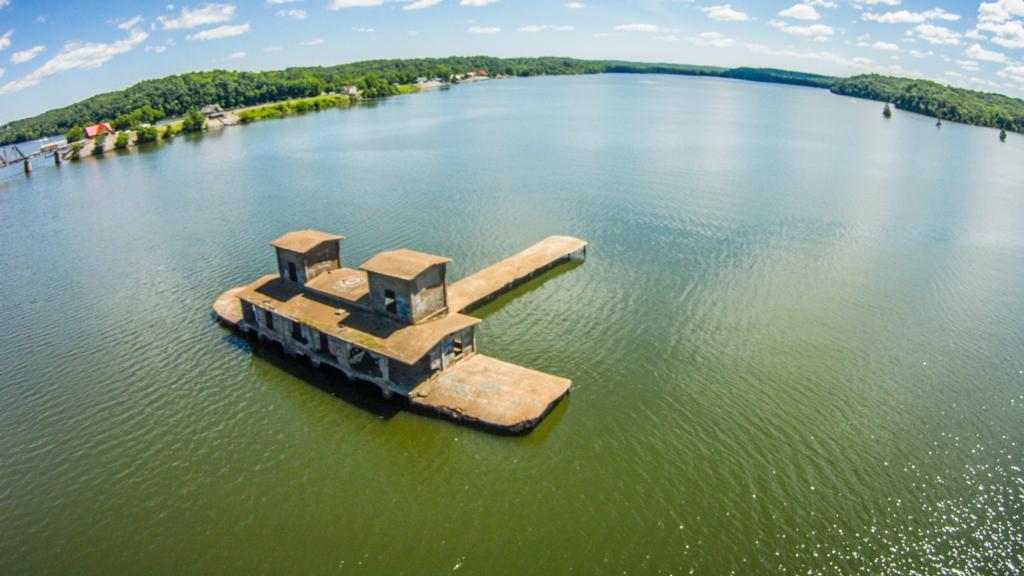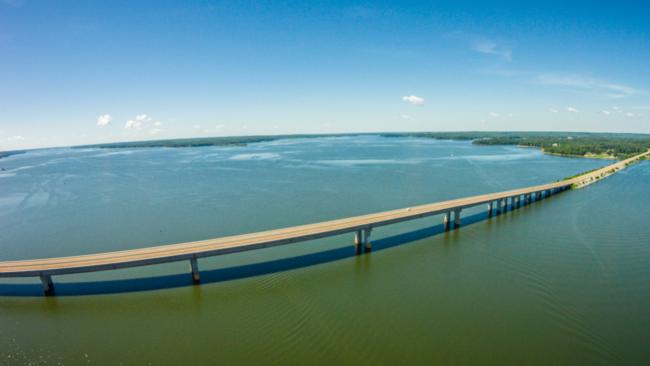Key Areas on Kentucky Lake
More than 100 miles of water await anglers for the Tour’s fifth stop

Kentucky Lake and Lake Barkley are both hotbeds of tournament activity on any given weekend, but this week they are absolutely smoldering. With the FLW Bass Fishing League (BFL) All-American on Barkley and the Walmart FLW Tour on Kentucky, the bass will have a lot to contend with.
While both lakes are great for bass fishing, Kentucky is perhaps the best ledge-fishing lake in the country and a fitting stage for the fifth stop of the Tour. Here’s how it lays out, working up the lake from North to South.
Kentucky Dam Marina
Takeoff and weigh-in both happen right at the Kentucky Dam Marina, which is situated on the northernmost end of the lake right by the dam, where the turbines churn up electric power and the Tennessee River finally has the chance to flow freely into the Ohio River.
The North End
The northern end of Kentucky Lake is often one of the most crowded sections of the lake. It has miles of offshore ledges broken up by secondary channels and the main channel of the Tennessee River, and it offers some dynamite fishing. Tournaments can be won from one end of the lake to the other, but the north end has a reputation for more quantity than quality, a factor that anglers will no doubt consider.
The north end is the most developed section of the lake and will experience the most traffic from pleasure boaters on the weekend. It’s deeper and generally a bit clearer than the southern end, with no aquatic vegetation save for a little bank grass in the bays.
Jonathan Creek and the 68/80 Eggners Ferry Bridge
The first big creek heading south is Jonathan Creek on the western side of the lake. It’s one of the most popular places to fish for crappie and is loaded with planted brush. In front of it, there are also some important ledges, and they’ve been key players in plenty of tournaments. Just south of Jonathan is one of the first true divisions on the lake: the Eggners Ferry Bridge that carrys 68/80 across the lake. A new bridge is currently under construction, and though the fishing in the immediate area isn’t any different a few miles north or south, it’s a handy reference point for anglers.
For reference, the western side of the Kentucky Lake is mostly private, developed land, while the eastern side is part of the Federally owned Land Between the Lakes (LBL) complex, which has no docks and very little developed shoreline. LBL lines most of the Kentucky shoreline and extends a good ways into Tennessee waters.
Blood River
Another major western inflow, Blood River has some of the better shallow bank grass and bushes in Kentucky Lake as well as some excellent ledges. The area around Blood along the main river channel is truly one of the best sections of the lake. It was here that Tom Redington won the 2015 Costa FLW Series event, and it has numerous quality ledges both right on the main channel and back on secondary places.
With patchy cell service and few large ramps on the main drag, this part of the lake also sees less fishing pressure than the north end. It’s also where the lake changes hands from Kentucky to Tennessee.
Paris
The Ned McWherter Bridge at US Highway 79 and Paris Landing are icons in the tournament world. The ledges around Paris are just as good as anywhere else on the lake, and it’s also the part of Kentucky Lake where some shallow hydrilla begins to creep into the picture.
About 40 miles from takeoff on the north end, getting to Paris is a haul, but for pros looking to find water with a little less pressure or simply the next offshore school, it can easily be worth it. From Paris on south, there’s also a reputation for a shift toward larger bass and smaller schools. When getting five bites a day is the key, that’s a big attraction for pros.
The South End
The farther south of Paris you run, the less Kentucky Lake looks like a lake or reservoir and the more it resembles a river – complete with vast backwaters. The ledges get shallower, hydrilla becomes more abundant and the bass can get a little bigger. If a shallow pattern plays strong in this event, it’s likely that it will come from this section of the lake.
All the way south to and beyond New Johnsonville, which is marked by the Highway 70 bridge, can play for the win, but to get there a pro will need to undertake a run of more than 60 miles – the equivalent of running from Plattsburgh to Ticonderoga on Lake Champlain. Kentucky Lake is more than 100 miles long and can get very rough. To go so far in search of gold is a risk indeed. That said, there are giants on the ledges and in the grass of the south end, and it might be a run worth making.





